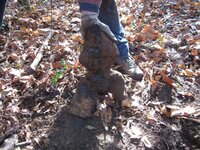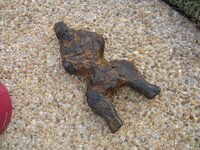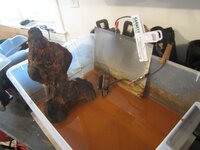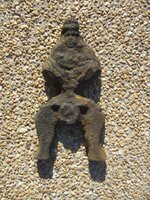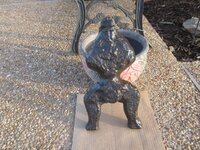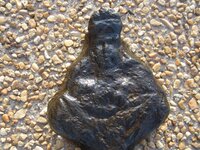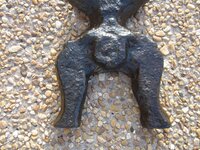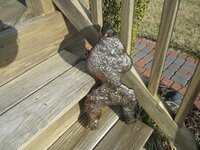Bill D. (VA)
Silver Member
Many of you may remember when Dan and I extricated this huge 20 lb glob of corroded iron from a massive entanglement of roots back before Thanksgiving. It was found on the steep banks of a ravine just above a spring stream adjacent to an early colonial site we'd been hunting. It's been undergoing electrolysis for about 2 months now, and I'll have to say it's been the most difficult iron preservation project I've undertaken. Due to the massive size and weight of the andiron the electrolysis process went very slow. About once a week I'd pull it out of the tank and carefully chip away at some of the corrosion using a hammer, screwdriver, wire brush, or even a dremel tool. It finally got to the point that I felt if I kept going any further it would start eating away at the base metal, so I decided to call it quits yesterday. After one last attempt to get as much of the rusty spots off as I could, I soaked liberally with WD-40 as I usually do and let it do its work for a bit. Then after thoroughly drying I applied 3 coats of clear polyurethane to complete the job. There are still some orange spots left, but I did all I could without starting to damage the artifact.
As I've stated before, the top of the piece depicts what appears to be the head of an Aztec, Incan or Egyptian queen with the facial details showing up nicely along with what appears to be some sort of headdress or crown on her head. Further down it looks like I can see folded arms along with some kind of large, decorative medallion below that. On the back you can see where the horizontal bar that supported the firewood was attached. Based on its huge size, it must have been used in a very large fireplace in the manor house we know existed somewhere on this site. A friend of mine who is an authority working for the Colonial Williamsburg Foundation positively ID'd this as an upright from a colonial andiron, and not a boot jack as many on this forum originally thought. And it could date anywhere from the late 1600s to the late 1700s. Regardless, it's a very cool colonial piece, and I can now finally start the cleaning process on the backlog of other iron artifacts that have been waiting patiently in line.
The pics below show (hopefully in order) the andiron immediately after being recovered, in the process of being cleaned, and the final product.
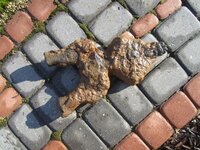
As I've stated before, the top of the piece depicts what appears to be the head of an Aztec, Incan or Egyptian queen with the facial details showing up nicely along with what appears to be some sort of headdress or crown on her head. Further down it looks like I can see folded arms along with some kind of large, decorative medallion below that. On the back you can see where the horizontal bar that supported the firewood was attached. Based on its huge size, it must have been used in a very large fireplace in the manor house we know existed somewhere on this site. A friend of mine who is an authority working for the Colonial Williamsburg Foundation positively ID'd this as an upright from a colonial andiron, and not a boot jack as many on this forum originally thought. And it could date anywhere from the late 1600s to the late 1700s. Regardless, it's a very cool colonial piece, and I can now finally start the cleaning process on the backlog of other iron artifacts that have been waiting patiently in line.
The pics below show (hopefully in order) the andiron immediately after being recovered, in the process of being cleaned, and the final product.

Attachments
Last edited:
Upvote
16


